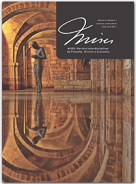The Late Spanish Scholastics – Part 1
DOI:
https://doi.org/10.30800/mises.2014.v2.587Keywords:
Scholastics, Cardinal Cajetan, Domingo de Soto, Martín de Azpilcueta, Juan de Medina e Diego de Covarrubias y Leyva, Salamanca School, Inflation, UsuryAbstract
The author shows how maritime commerce has changed the geopolitical Europe from the fifteenth century and points out that absolutism triumphed throughout Europe in the early seventeenth century. Then he shows late scholasticism as a product of the sixteenth century which foreshadowed the Protestant Reformation and the Catholic Counter-Reformation. He also states that if the thirteenth century could be described as the golden age of scholastic philosophy, the sixteenth century was its silver age, a period of great revival of scholastic thought, with the revival of Thomism led by Tommaso de Vio, the famous Cardinal Cajetan, an advocate of individual progress and lucrum cessans. Then, the author describes the economic way of thinking of some other thinkers from the School of Salamanca as De Soto, Azpilcueta, Medina e Covarrubias y Leyva, among others, known as the first pioneers Austrian School.



















